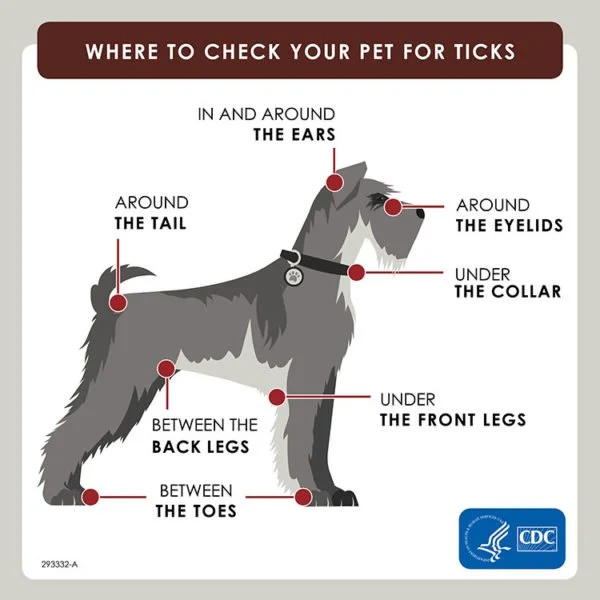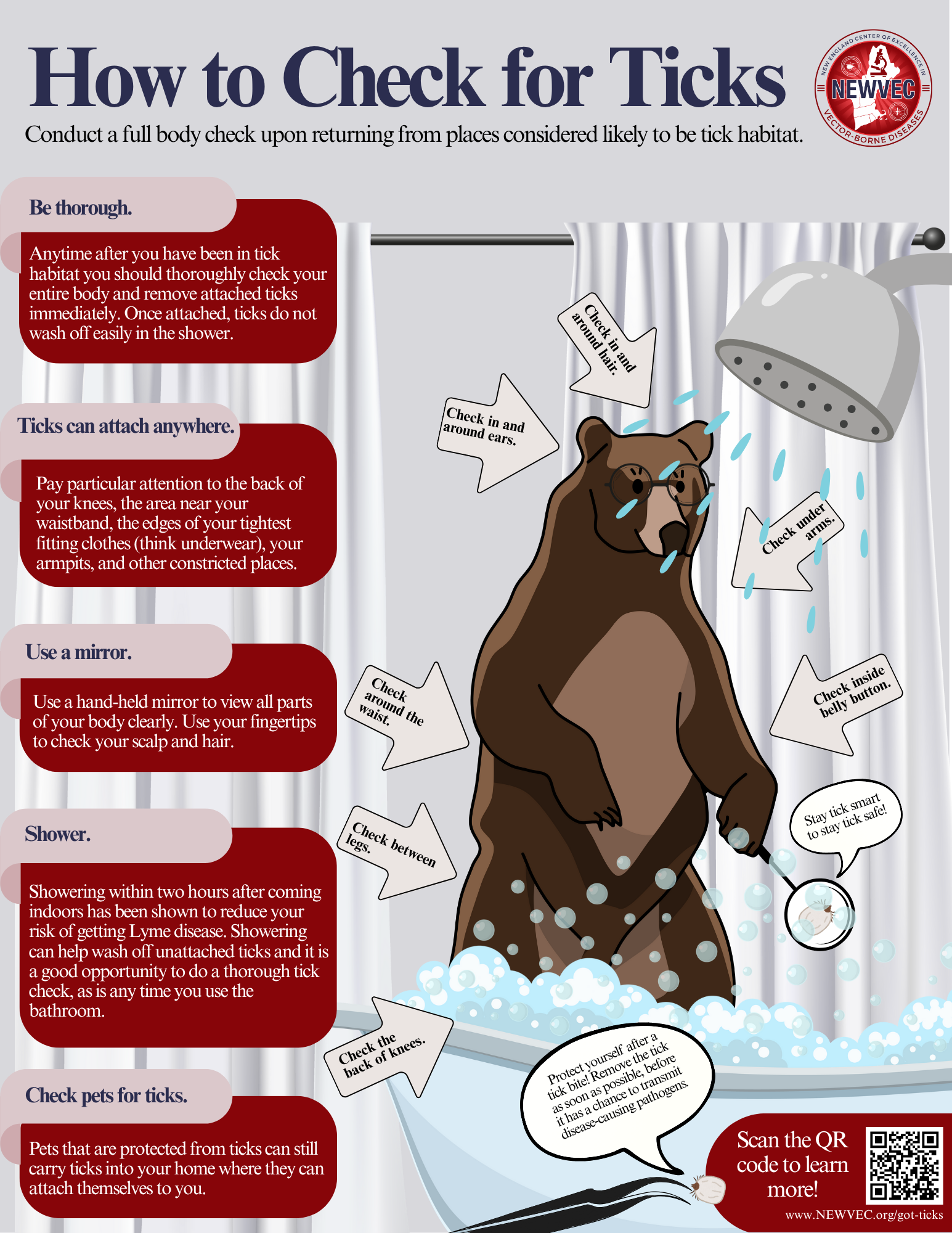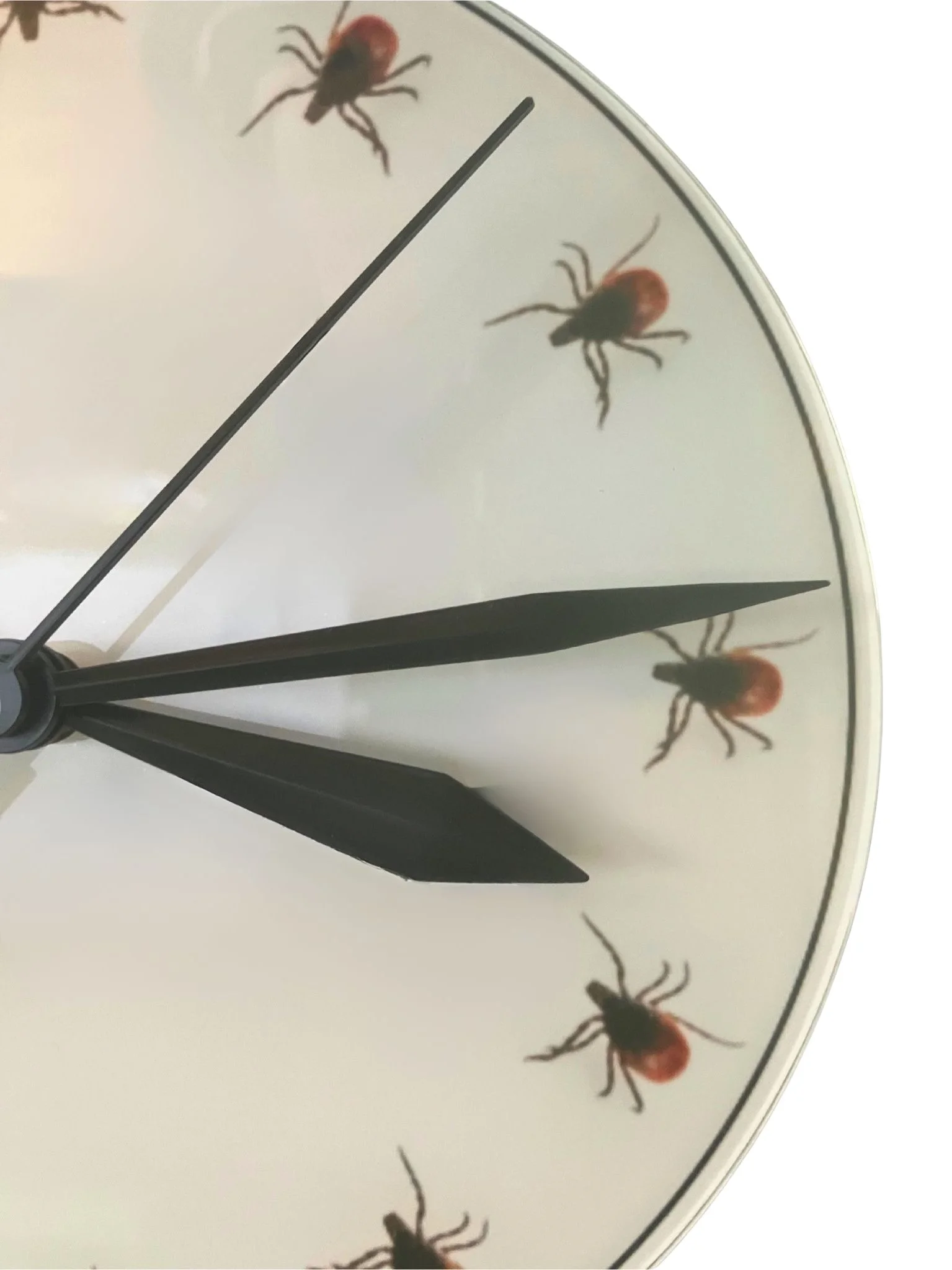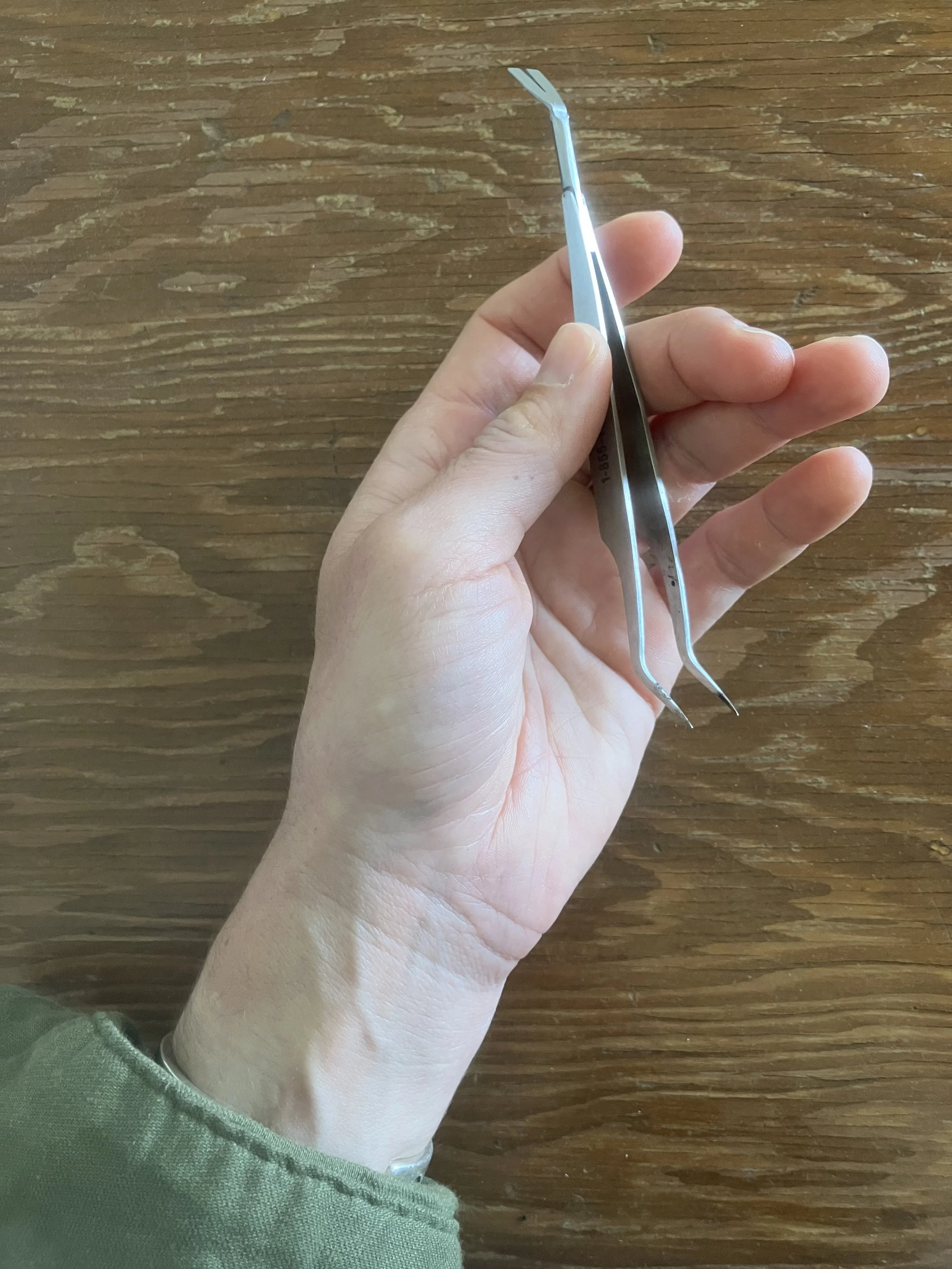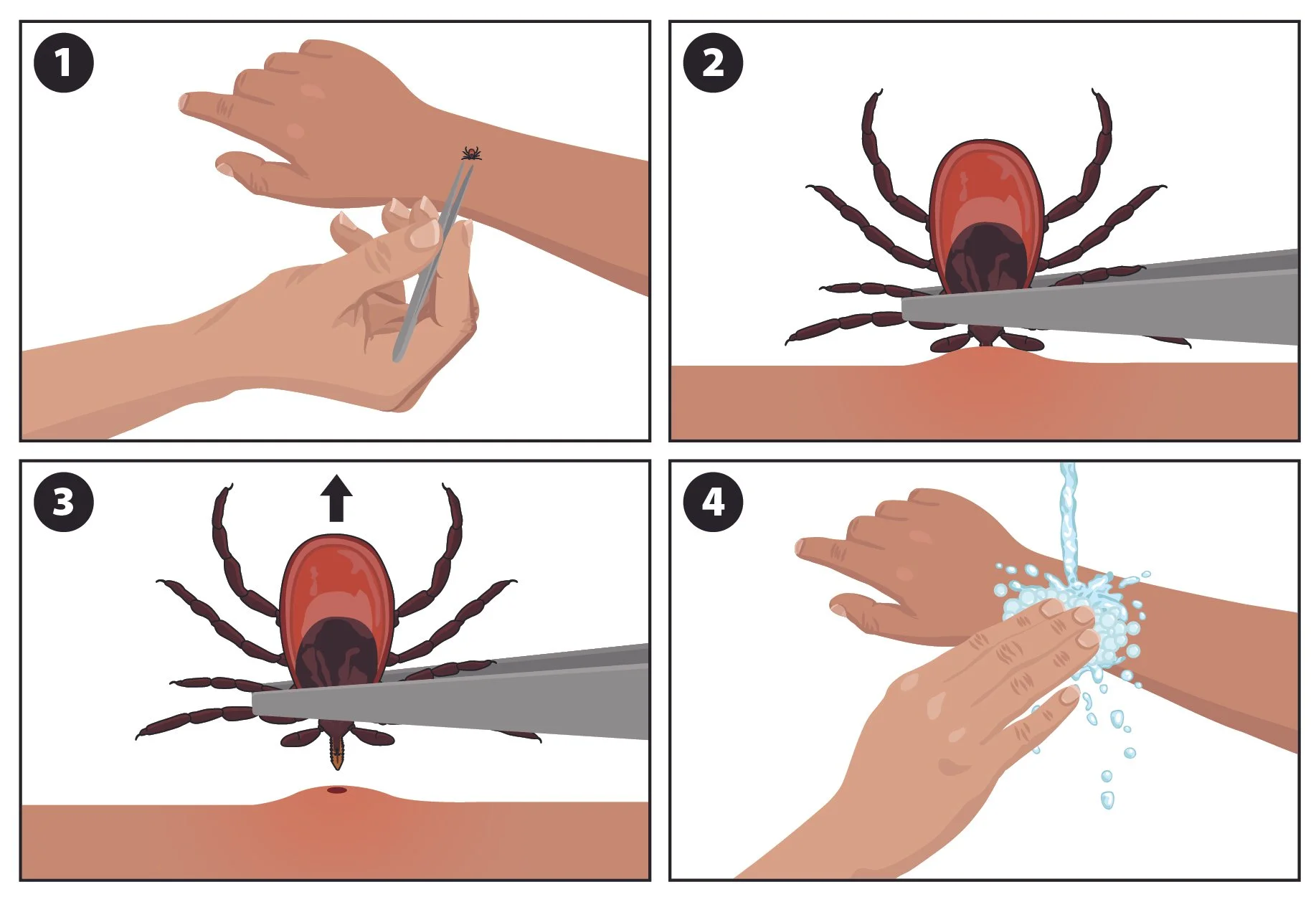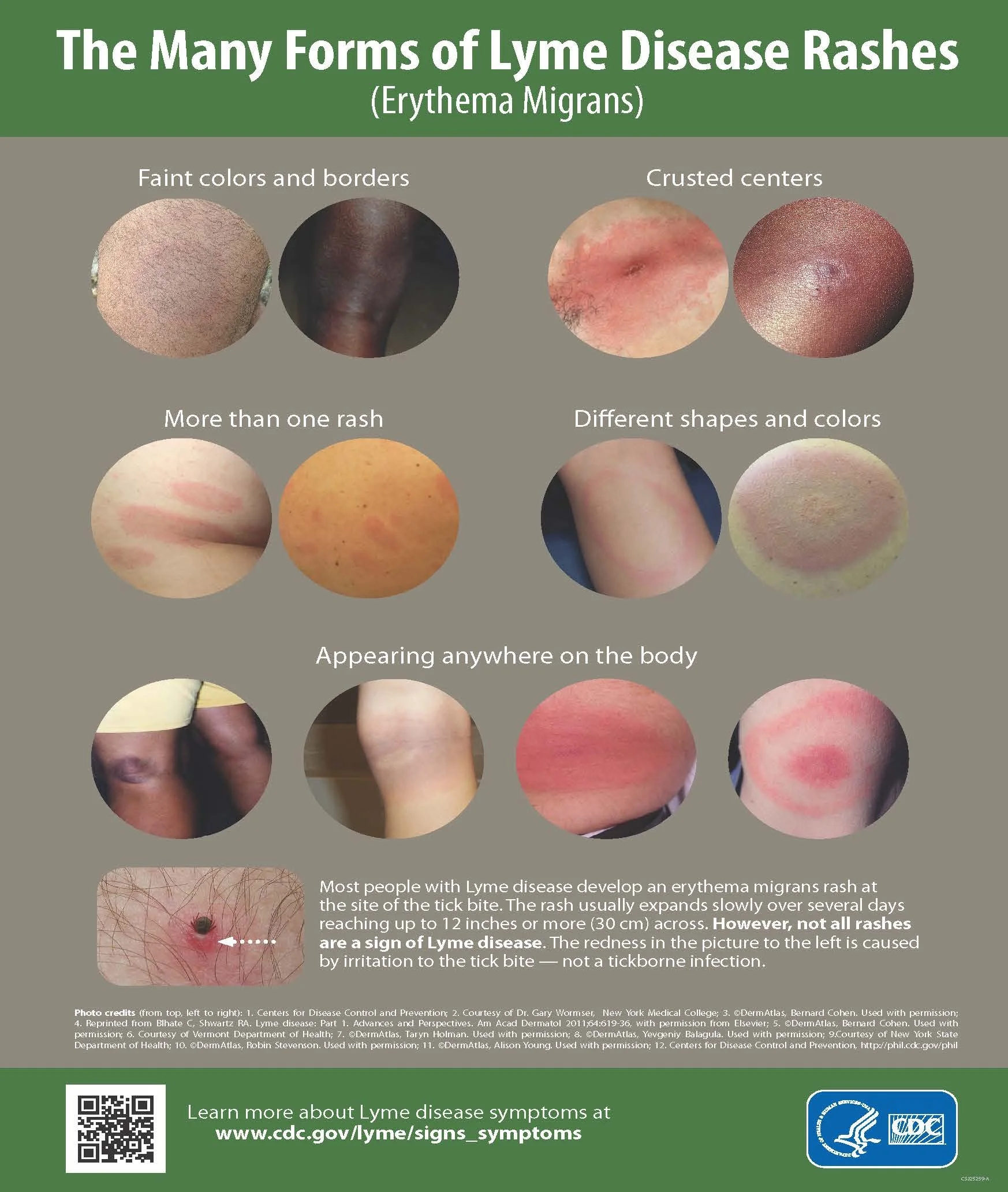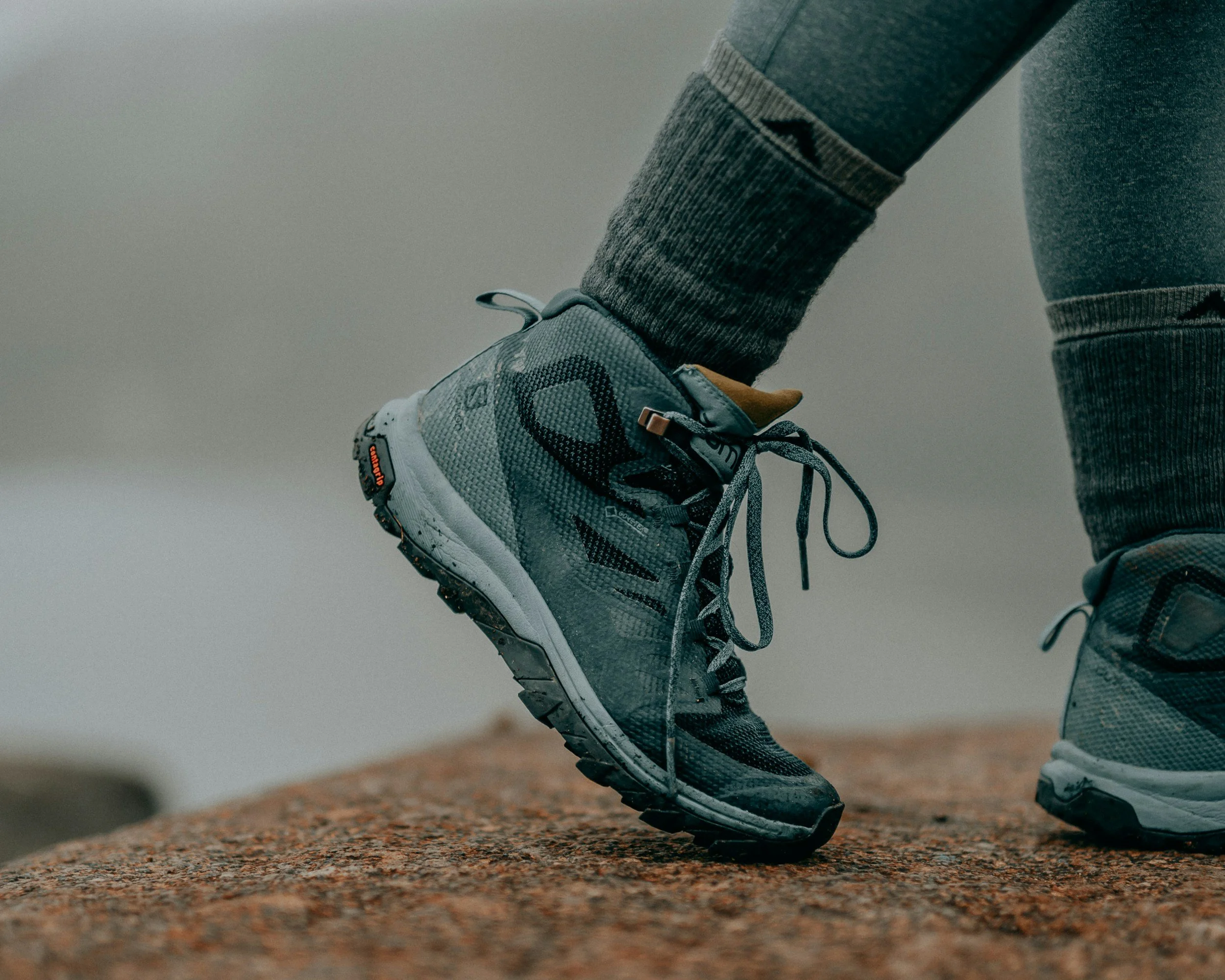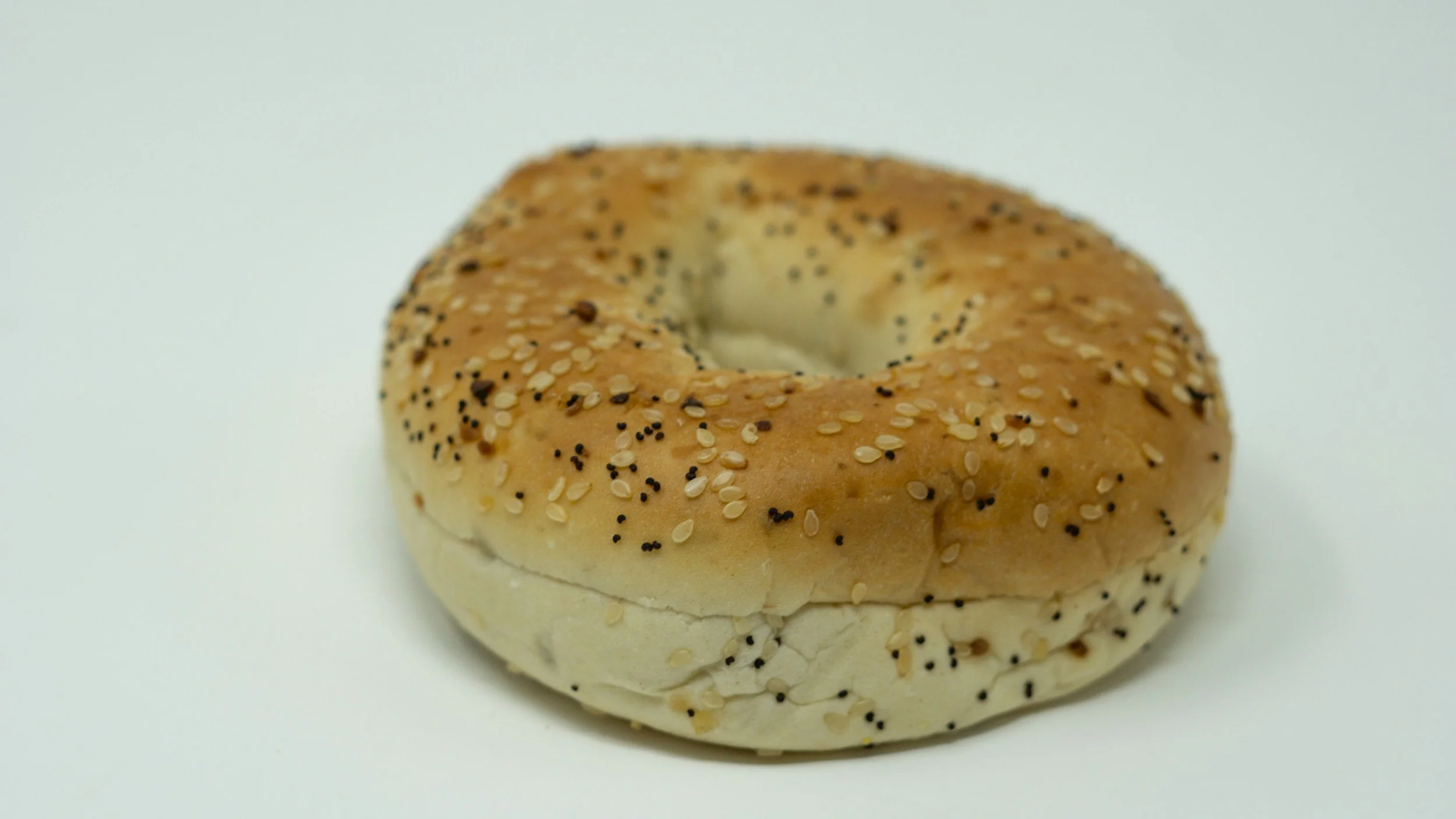
How to Check for Ticks
Prevention is the best way to mitigate the public health impacts of Lyme and other vector-borne diseases.
Tick bites are preventable.
Reducing tick abundance in your yard, wearing tick repellent, treating pets with tick repellent, and doing body scans to find ticks can prevent tick bites and disease transmission.

Conduct a full body check upon returning from areas considered likely to be tick habitat, like the buffer area where the yard meets the woods, areas with fallen leaves and piles of leaf litter, and underbrush on the side of trails.
1. Check these parts of your body for ticks. Use a hand-held mirror to view all parts of your body clearly. Use your fingertips to check your scalp and use a mirror to help when checking your hair.
In and around hair
In and around the ears
Under the arms
Inside belly button
Around the waist
Between the legs
Back of the knees
2. Tumble clothes in a dryer on high heat for ten minutes to kill any ticks that may be on clothing when you come indoors. Remember to check gear like shoes, backpacks, and tents.
3. Shower after being outdoors. Showering within two hours of coming indoors has been shown to reduce your risk of getting Lyme disease. Showering can help wash off unattached ticks and it is a good opportunity to do a thorough tick check, especially since attached ticks will not wash off easily.
4. Check pets for ticks! Pets that are protected from ticks can still carry them into your home where they can attach themselves to you.
For most tick-borne diseases, you have at least 24 hours to find and remove a feeding tick before it transmits an infection.
A pair of metal forceps for tick removal.
How to Remove an Attached Tick
Remove the tick as soon as possible.
Using pointy tweezers, grab the tick just above the skin’s surface and pull upward. If fine-tipped tweezers are not available, use regular tweezers or your fingers. If the tick’s mouthparts break off, try to remove them as you would a splinter. If the mouthparts are too difficult to remove, leave them and let them come out on their own as the bite heals. Leaving the mouthparts in does not increase the likelihood of disease transmission. When you’re finished, thoroughly clean the bite area. Watch a short video about tick removal HERE.
Identify and test the tick.
Not all ticks carry disease-causing organisms. Blacklegged ticks, for example, are the only ticks that transmit the bacteria that cause Lyme disease. If the tick you find is not a blacklegged tick, you won’t get Lyme disease. Learn how to identify your own tick HERE or send in your tick to our partners at the University of Rhode Island for identification and testing. Learn how HERE.
Watch for changes.
Keep track of changes in your health, like aches and pains, fever or chills, and rashes, for 30 days after removing the tick regardless of your test results. Lyme disease, Southern tick-associated rash illness (STARI), Rocky Mountain spotted fever (RMSF), ehrlichiosis, and tularemia can cause distinctive rashes. Positive test results showing that a tick contains a disease-causing organism do not necessarily mean that you contain that disease-causing organism. The tick may have been removed before any bacteria it carried could be passed on, but watching for signs and symptoms of illness is important.

Tips, Ticks, and Reminders
What to know to protect yourself from tick bites before, during, and after outdoor activities.
Know Before You Go
Treat clothing, shoes, and gear like backpacks and tents with products containing 0.5% permethrin.
Permethrin should be sprayed only outdoors, and the treated items should be kept outside until completely dry. Do not use permethrin on your skin. Permethrin can be toxic to cats when wet but is considered safe once dry.
Permethrin is a synthetic version of a compound found in chrysanthemum flowers and can be used on all fabric types, including leather. Permethrin kills ticks and remains effective through several washes. Learn how to apply permethrin to clothes, shoes, and gear in this short video.
Wear long sleeves and pants and keep them tucked into socks or boots.
Wearing shorts and short sleeves in tick-heavy areas increases your risk of tick bites. Ticks start low and crawl up. Ticks do not jump, fly, or drop from trees. They are down on the ground or in shrubs and after they crawl onto you they move upward until they hit a roadblock like a waistband or other clothing restriction, which then becomes a good spot to attach.
Tucking pant legs into socks is a good way to keep ticks on the outside of clothing where they may be seen or get brushed off. Ticks will not bite through clothing.
Use Environmental Protection Agency (EPA) registered insect repellents containing DEET, picaridin, IR3535, Oil of Lemon Eucalyptus (OLE), para-menthane-diol (PMD), or 2-unecanone. Follow directions and reapply as needed.
Do not use products containing OLE or PMD on children under three years old and always read all the instructions.
Wear light-colored clothing.
Ticks are harder to see on dark fabrics. Wear light-colored clothes to make it easier to find them. Remember, all ticks come in small, medium, and large sizes. Ticks hatch from eggs and develop through three active (and blood-feeding) stages:
larvae (when they are the size of a grain of sand);
nymphs (when they're the size of a poppy seed); and
adults (when they're the size of an apple seed).
Use EPA-registered repellents and acaricides.
Picaridin (20%) on exposed skin
Repels ticks, needs to be reapplied.
DEET (20–30%) on exposed skin (NOT on clothing, shoes, or gear)
Repels ticks, needs to be reapplied.
Permethrin (0.5%) on clothing, shoes, and gear (NOT on skin)
Kills ticks, needs to be reapplied after several washes.
The best protection you can achieve is from using a repellent that contains permethrin on your clothes and one that contains DEET or picaridin on your skin.
In this short video NEWVEC Executive Director Dr. Stephen Rich explains how ticks quest and attach to people.
What to Avoid During Your Time Outside
Avoid tall grass, brush, and wooded areas.
Ticks hang out in shaded, humid environments, especially in overgrown grass and under leaf litter. Avoid contact with ticks by staying out of high grass and leaf litter and walking in the center of trails away from brushy undergrowth.
Avoid sitting directly on the ground.
Logs, stumps, or grass may have ticks on them.
Avoid poorly maintained trails.
Stick to the center of well-groomed trails to avoid brushing up against vegetation.
Know where and when to expect ticks.
Ticks live in grassy, brushy, or wooded areas and on animals. Spending time outside walking your dog, camping, gardening, or hunting could bring you in close contact with ticks. Many people get ticks in their own yard or neighborhood.
Ticks like shaded, humid environments, especially in overgrown grass and leaf litter.
Did you know ticks can be active in winter? Adult-stage blacklegged ticks become active after the first frost. They're not killed by freezing temperatures, and they're active any winter day that the ground is not frozen or covered in snow.
Tucking pant legs into socks is a good way to keep ticks on the outside of clothing where they may be seen or get brushed off.
The youngest ticks are small—the size of a grain of sand or a poppy seed. How many larval or nymphal ticks can you see on this everything bagel?
What to Remember After
Perform daily tick checks.
Whether you’re getting back to your car or your house, coming back from a backpacking trip, a day hike, or a backyard game of hide-and-seek with the kids, remember to check for ticks.
The simplest way to protect yourself after a tick bite is to remove the tick as soon as possible, before it has a chance to transmit disease-causing pathogens.
Ticks can attach anywhere. Pay particular attention to the back of your knees, the area near your waistband, the edges of your tightest fitting clothes (think underwear), your armpits, and other constricted places.
Anytime after you have been in tick habitat you should thoroughly check your entire body and remove attached ticks immediately. Once attached, ticks do not wash off easily in the shower.
UNH Extension says the best way to prevent Lyme disease is by doing tick checks.


